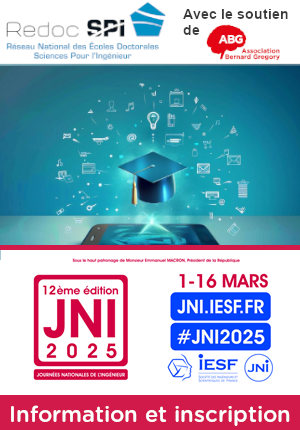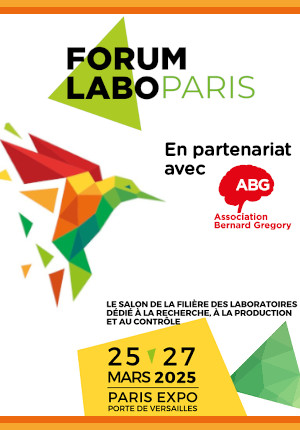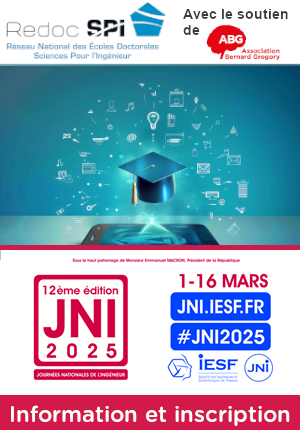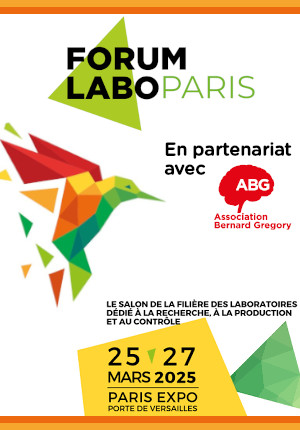Modélisation théorique de contaminants microhydratés : de la phase gazeuse à l'interaction avec des substrats naturels // Theoretical modelling of microhydrated contaminants: from the gas phase to interaction with natural substrates
|
ABG-128656
ADUM-61434 |
Thesis topic | |
| 2025-02-15 |
Université de Toulouse
Toulouse Cedex 4 - France
Modélisation théorique de contaminants microhydratés : de la phase gazeuse à l'interaction avec des substrats naturels // Theoretical modelling of microhydrated contaminants: from the gas phase to interaction with natural substrates
- Physics
Dynamique moléculaire, DFT, contaminant, microsolvatation, pH
Molecular dynamics, DFT, contaminant, microsolvation, pH
Molecular dynamics, DFT, contaminant, microsolvation, pH
Topic description
Cette thèse propose l'étude de contaminants organiques comme par exemple, l'atrazine ainsi que de ses produits de dégradation, en tenant compte de l'influence du pH. À l'aide de méthodes de simulation, nous étudierons les différents couples acido-basiques de ces composés en solution aqueuse. Une attention particulière sera accordée au calcul des constantes d'acidité microscopiques et macroscopiques (pKa) des différents couples d'espèces moléculaires en solution, en utilisant des approches de modélisation statique et dynamique. Ces calculs impliquent un grand nombre d'espèces protonées et déprotonées, et pour chacune un grand nombre de conformations à explorer. La prise en compte du solvant en incluant des molécules d'eau explicites permettra de décrire la situation d'un contaminant microhydraté. Les résultats théoriques obtenus seront confrontés à des résultats expérimentaux produits par l'équipe « Agrégats » du LCAR avec laquelle nous travaillerons en étroite collaboration.
Nous nous intéresserons également à l'étude de l'hydratation des complexes de ces contaminants organiques avec Na+ et Ca2+ (cations abondants dans le sol). D'un point de vue expérimental, cette tâche sera plus exploratoire. En effet, si la production d'espèces cationiques ou protonées « simples » est expérimentalement bien maîtrisée, l'ajout de cations Na+ ou Ca2+ dans la source d'agrégats existante n'est pas évidente. En raison de sa pression de vapeur plus faible, le sodium sera un meilleur candidat pour débuter. En effet, le groupe expérimental LCAR travaille depuis plusieurs années avec des clusters de sodium. Les calculs sur [M-Na-(H2O)n]+ donneront des informations théoriques structurales et énergétiques sur la microhydratation des complexes précédemment étudiés. L'étude conjointe théorie/expérience de ces espèces est d'un grand intérêt pour évaluer l'énergie d'interaction dans les sous-systèmes : entre un cation et un contaminant ou entre un cation et l'agrégat d'eau en fonction du nombre n de molécules d'eau.
La combinaison de ces études expérimentales et théoriques constituera une première étape dans la construction de structures de départ pertinentes pour le contaminant microhydraté en interaction avec une surface d'argile Na-Montmorillonite.
A chaque étape, l'introduction de molécules d'eau explicites dans les simulations conduit à une complexité accrue du fait d'une surface d'énergie potentielle bien plus vaste à modéliser. Le coût de calcul nécessaire pour mener à bien de telles études est très élevé. Pour surmonter cette limitation informatique, nous envisageons de développer des potentiels interatomiques de qualité DFT en utilisant une méthodologie d'apprentissage profond basée sur les réseaux neuronaux (NN) avec lesquels notre groupe a récemment commencé à travailler (ANR DIAPASONS AAPG 2024). L'obtention de potentiels de haute qualité dépend de la qualité de l'entraînement, ce qui est un des défis de ce projet. Ce modèle sera entraîné sur la base de résultats préalablement obtenus par des simulations théoriques, afin de fournir une approche prédictive, précise et efficace pour évaluer le comportement de ces composés microhydratés ou en solution aqueuse et à différentes valeurs de pH.
------------------------------------------------------------------------------------------------------------------------------------------------------------------------
------------------------------------------------------------------------------------------------------------------------------------------------------------------------
This thesis proposes to study organic contaminants such as atrazine and its degradation products, considering the influence of pH. Using simulation methods, we will study the various acid-base pairs of these compounds in aqueous solution. Particular attention will be paid to calculating the microscopic and macroscopic acidity constants (pKa) of the various pairs of molecular species in solution, using static and dynamic approaches. These calculations involve many protonated and deprotonated species, and for each many conformations to be explored. Taking the solvent into account by including explicit water molecules will make it possible to describe the situation of a microhydrated contaminant. The theoretical results obtained will be compared with experimental results produced by the LCAR ‘Cluster' team, with which we will be working closely.
We will also study the hydration of complexes of these organic contaminants with Na+ and Ca2+ (abundant cations in the soil). From an experimental point of view, this task will be more exploratory. While the production of ‘simple' cationic or protonated species is experimentally well mastered, the addition of Na+ or Ca2+ cations to the existing source of aggregates is not obvious. Because of its lower vapor pressure, sodium would be a better candidate to start with. Indeed, the LCAR experimental group has been working with sodium clusters for several years. Calculations on [M-Na-(H2O)n]+ will provide theoretical, structural and energetic information on the microhydration of the complexes previously studied. The joint theoretical/experimental study of these species is of great interest for assessing the interaction energy in subsystems: between a cation and a contaminant or between a cation and the water cluster as a function of the number n of water molecules.
The combination of these experimental and theoretical studies will constitute a first step in the construction of relevant starting structures for the microhydrated contaminant interacting with a Na-Montmorillonite clay surface.
At each step, the introduction of explicit water molecules into the simulations leads to increased complexity due to the much larger potential energy surface to be modelled. The computational cost of carrying out such studies is very high. To overcome this computational limitation, we plan to develop DFT-quality interatomic potentials using a deep learning methodology based on neural networks (NN), with which our group has recently begun working (ANR DIAPASONS AAPG 2024). Obtaining high-quality potentials depends on the quality of the training, which is one of the challenges of this project. This model will be trained based on results previously obtained by theoretical simulations, to provide a predictive, accurate and efficient approach for evaluating the behavior of these compounds microhydrated or in aqueous solution and at different pH values.
------------------------------------------------------------------------------------------------------------------------------------------------------------------------
------------------------------------------------------------------------------------------------------------------------------------------------------------------------
Début de la thèse : 01/10/2025
Nous nous intéresserons également à l'étude de l'hydratation des complexes de ces contaminants organiques avec Na+ et Ca2+ (cations abondants dans le sol). D'un point de vue expérimental, cette tâche sera plus exploratoire. En effet, si la production d'espèces cationiques ou protonées « simples » est expérimentalement bien maîtrisée, l'ajout de cations Na+ ou Ca2+ dans la source d'agrégats existante n'est pas évidente. En raison de sa pression de vapeur plus faible, le sodium sera un meilleur candidat pour débuter. En effet, le groupe expérimental LCAR travaille depuis plusieurs années avec des clusters de sodium. Les calculs sur [M-Na-(H2O)n]+ donneront des informations théoriques structurales et énergétiques sur la microhydratation des complexes précédemment étudiés. L'étude conjointe théorie/expérience de ces espèces est d'un grand intérêt pour évaluer l'énergie d'interaction dans les sous-systèmes : entre un cation et un contaminant ou entre un cation et l'agrégat d'eau en fonction du nombre n de molécules d'eau.
La combinaison de ces études expérimentales et théoriques constituera une première étape dans la construction de structures de départ pertinentes pour le contaminant microhydraté en interaction avec une surface d'argile Na-Montmorillonite.
A chaque étape, l'introduction de molécules d'eau explicites dans les simulations conduit à une complexité accrue du fait d'une surface d'énergie potentielle bien plus vaste à modéliser. Le coût de calcul nécessaire pour mener à bien de telles études est très élevé. Pour surmonter cette limitation informatique, nous envisageons de développer des potentiels interatomiques de qualité DFT en utilisant une méthodologie d'apprentissage profond basée sur les réseaux neuronaux (NN) avec lesquels notre groupe a récemment commencé à travailler (ANR DIAPASONS AAPG 2024). L'obtention de potentiels de haute qualité dépend de la qualité de l'entraînement, ce qui est un des défis de ce projet. Ce modèle sera entraîné sur la base de résultats préalablement obtenus par des simulations théoriques, afin de fournir une approche prédictive, précise et efficace pour évaluer le comportement de ces composés microhydratés ou en solution aqueuse et à différentes valeurs de pH.
------------------------------------------------------------------------------------------------------------------------------------------------------------------------
------------------------------------------------------------------------------------------------------------------------------------------------------------------------
This thesis proposes to study organic contaminants such as atrazine and its degradation products, considering the influence of pH. Using simulation methods, we will study the various acid-base pairs of these compounds in aqueous solution. Particular attention will be paid to calculating the microscopic and macroscopic acidity constants (pKa) of the various pairs of molecular species in solution, using static and dynamic approaches. These calculations involve many protonated and deprotonated species, and for each many conformations to be explored. Taking the solvent into account by including explicit water molecules will make it possible to describe the situation of a microhydrated contaminant. The theoretical results obtained will be compared with experimental results produced by the LCAR ‘Cluster' team, with which we will be working closely.
We will also study the hydration of complexes of these organic contaminants with Na+ and Ca2+ (abundant cations in the soil). From an experimental point of view, this task will be more exploratory. While the production of ‘simple' cationic or protonated species is experimentally well mastered, the addition of Na+ or Ca2+ cations to the existing source of aggregates is not obvious. Because of its lower vapor pressure, sodium would be a better candidate to start with. Indeed, the LCAR experimental group has been working with sodium clusters for several years. Calculations on [M-Na-(H2O)n]+ will provide theoretical, structural and energetic information on the microhydration of the complexes previously studied. The joint theoretical/experimental study of these species is of great interest for assessing the interaction energy in subsystems: between a cation and a contaminant or between a cation and the water cluster as a function of the number n of water molecules.
The combination of these experimental and theoretical studies will constitute a first step in the construction of relevant starting structures for the microhydrated contaminant interacting with a Na-Montmorillonite clay surface.
At each step, the introduction of explicit water molecules into the simulations leads to increased complexity due to the much larger potential energy surface to be modelled. The computational cost of carrying out such studies is very high. To overcome this computational limitation, we plan to develop DFT-quality interatomic potentials using a deep learning methodology based on neural networks (NN), with which our group has recently begun working (ANR DIAPASONS AAPG 2024). Obtaining high-quality potentials depends on the quality of the training, which is one of the challenges of this project. This model will be trained based on results previously obtained by theoretical simulations, to provide a predictive, accurate and efficient approach for evaluating the behavior of these compounds microhydrated or in aqueous solution and at different pH values.
------------------------------------------------------------------------------------------------------------------------------------------------------------------------
------------------------------------------------------------------------------------------------------------------------------------------------------------------------
Début de la thèse : 01/10/2025
Funding category
Funding further details
Concours Labex
Presentation of host institution and host laboratory
Université de Toulouse
Institution awarding doctoral degree
Université de Toulouse
Graduate school
482 SDM - SCIENCES DE LA MATIERE - Toulouse
Candidate's profile
Le/La candidat(e) recherché(e), issu(e) d'une formation en chimie ou en physique, devra être motivé(e) et démontrer sa capacité à être autonome. Il/elle devra avoir des compétences en chimie théorique, et être intéressé(e) par la manipulation d'outils informatiques, notamment pour le traitement des données (post-processing). Des compétences en bash et python sont obligatoires. Durant cette thèse, le/la doctorant(e) devra interagir avec l'équipe expérimentale.
The successful candidate, with a background in chemistry or physics, should be self-motivated and able to work independently. He/she should have skills in theoretical chemistry, and be interested in using IT tools, particularly for data processing (post-processing). Skills in bash and python are mandatory. During this thesis, the PhD student will interact with the experimental team.
The successful candidate, with a background in chemistry or physics, should be self-motivated and able to work independently. He/she should have skills in theoretical chemistry, and be interested in using IT tools, particularly for data processing (post-processing). Skills in bash and python are mandatory. During this thesis, the PhD student will interact with the experimental team.
2025-07-31
Apply
Close
Vous avez déjà un compte ?
Nouvel utilisateur ?
More information about ABG?
Get ABG’s monthly newsletters including news, job offers, grants & fellowships and a selection of relevant events…
Discover our members
 Groupe AFNOR - Association française de normalisation
Groupe AFNOR - Association française de normalisation  Institut de Radioprotection et de Sureté Nucléaire - IRSN - Siège
Institut de Radioprotection et de Sureté Nucléaire - IRSN - Siège  MabDesign
MabDesign  ONERA - The French Aerospace Lab
ONERA - The French Aerospace Lab  SUEZ
SUEZ  Aérocentre, Pôle d'excellence régional
Aérocentre, Pôle d'excellence régional  ADEME
ADEME  Laboratoire National de Métrologie et d'Essais - LNE
Laboratoire National de Métrologie et d'Essais - LNE  ANRT
ANRT  PhDOOC
PhDOOC  MabDesign
MabDesign  Tecknowmetrix
Tecknowmetrix  Généthon
Généthon  CESI
CESI  TotalEnergies
TotalEnergies  Ifremer
Ifremer  CASDEN
CASDEN  Nokia Bell Labs France
Nokia Bell Labs France  Institut Sup'biotech de Paris
Institut Sup'biotech de Paris










